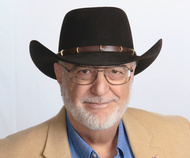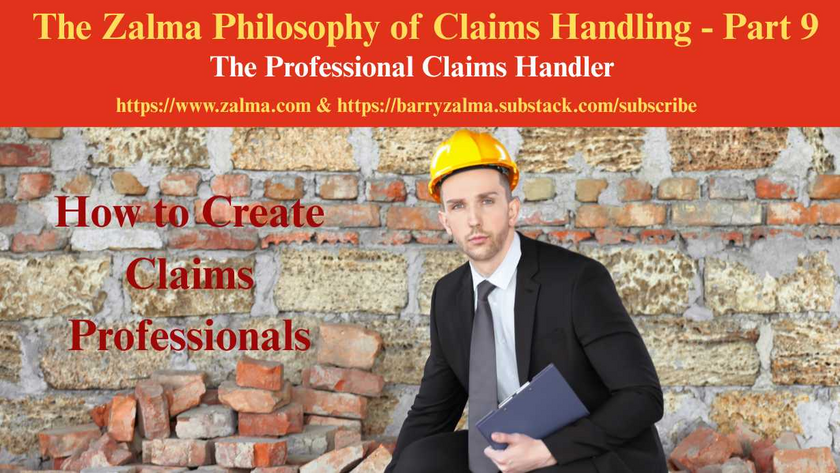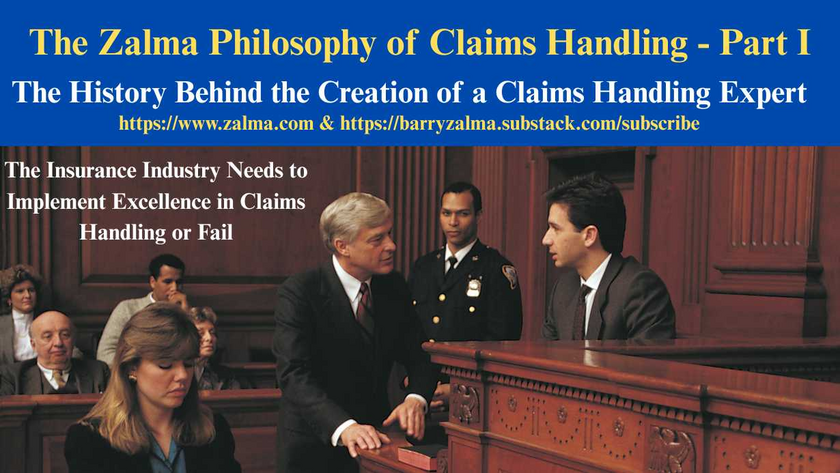
The History of Insurance
The History of Insurance
Insurance in some form is as old as historical society. So-called bottomry contracts were known to merchants of Babylon as early as 4000–3000 BCE. Bottomry was also practiced by the Hindus in 600 BCE and was well understood in ancient Greece as early as the 4th century BCE
The essence of insurance is the spreading of risk from one person to many. Phoenician merchants began transferring some of their risk to the backers of specific voyages, whereby the backers would profit if the voyage was successful, but would lose their investment if the cargo was lost at sea, either from natural disasters or from pirates. In exchange for backing a voyage and to assure payment if the voyage was successful, Phoenician law allowed the lenders to confiscate the merchant's ship for nonpayment.
This form of collateralized loan was called bottomry: this term probably arose because the ship's hull was referred to as the bottom. Since substantial resources were required for voyages, and the wealth of these early nations depended heavily on trade, other settlements around the Mediterranean and in Asia also enacted bottomry laws by 4000 BC.
In 300 BC the Babylonians developed a system of loans for shipments by sea. Merchants found the risks of shipping by sea to be too great to take on alone, since the loss of one ship could bankrupt a merchant. With insurance, the risk of shipping was equitably spread among those subscribing to the loan.
Another means of lowering risk was to transfer at least some of that risk to moneylenders. The great Code of Hammurabi allowed the transfer of risk from merchants to moneylenders, so that if their merchandise was lost or abandoned, then their loans to the moneylenders were forgiven.
The Phoenicians and Greeks permitted shipowners and merchants to pledge either the ship or the cargo as collateral for loans, so that they can either obtain the loan or get a lower interest rate. Some lenders decided to assume a greater risk in exchange for charging a higher interest rate by forgiving the loan if the ship or cargo was lost.
These early versions of marine insurance were more like a modern football pool than insurance as we know it today. A stakeholder would simply hold the bets of the merchants (the premium) until the ship returned to port. If it did not return, the stake would be paid out to the merchant whose cargo was lost. If it did return, the stake was paid out to the other merchants, who earned a healthy profit on their gamble. Since the merchants were betting on each other’s success, the loss of one ship could be absorbed by the entire merchant community. By spreading the risk, the merchants made trade by sea economically viable.
One of the earliest marine policy to have survived was issued in 1347, concerning a shipment from Genoa to Majorca on a vessel called the Santa Clara. The policy was written in a form that characterized the premium as a “loan” to the “insurer” from the “insured.” The loan was repayable only if the cargo failed to arrive. If the cargo was lost the loan was repaid to the insured for twice the amount of the loan. In many situations, the premium—or interest rate—reached 100%. That may seem steep, but it reflected the excessive risks faced by merchants of that time.
The custom of insuring maritime ventures was well established in England by the end of the 16th century, as indicated by the 1601 act of Parliament entitled “An Act Concerning Matters of Assurances Amongst Merchants.” This is the first known statutory recognition of insurance. It was an attempt to regulate what at the time was a new business. Since then, many thousands of laws have been enacted around the world to regulate the business of insurance.
Fire Insurance in England
Fire insurance arose after the Great Fire of London in 1666. A number of insurance companies were started in England after 1711, during the so-called bubble era. Many of them were fraudulent, get-rich-quick schemes concerned mainly with selling their securities to the public. Nevertheless, two important and successful English insurance companies were formed during this period—the London Assurance Corporation and the Royal Exchange Assurance Corporation. Their operation marked the beginning of modern property and liability insurance.
Lloyd’s of London
No discussion of the early development of insurance in Europe would be complete without reference to Lloyd’s of London, the international insurance market. It began in the 17th century as a coffeehouse patronized by merchants, bankers, and insurance underwriters, gradually becoming recognized as the most likely place to find underwriters for marine insurance. Edward Lloyd supplied his customers with shipping information gathered from the docks and other sources; this eventually grew into the publication Lloyd’s List, still in existence. Lloyd’s was reorganized in 1769 as a formal group of underwriters accepting marine risks. (The word underwriter is said to have derived from the practice of having each risk taker write his name under the total amount of risk that he was willing to accept at a specified premium.) With the growth of British sea power, Lloyd’s became the dominant insurer of marine risks, to which were later added fire and other property risks. Today Lloyd’s is a major reinsurer as well as primary insurer, but it does not itself transact insurance business; this is done by the member underwriters, who accept insurance on their own account and bear the full risk in competition with each other.
The insurance contract was signed by the people willing to take the risk, with each specifying the percentage of the risk he was taking. Since the names of the insurers were always placed under the contract terms, the insurers became known as “Underwriters.”
The assembly of insurers under a single roof established Lloyd’s of London as the first modern insurance market. Lloyd’s’ method of transacting insurance became the cornerstone on which the modern insurance industry was built. Lloyd’s survives today as an insurance marketplace.
The building at One Lime Street, London, United Kingdom, where insurance is transacted by Lloyd’s Underwriters is operated by the Corporation of Lloyd’s. The Corporation of Lloyd’s is not an insurer. It owns the building where the Underwriters transact the business of insurance. The insurers who sign on to a particular risk (usually syndicates of multiple individual and corporate insurers) are properly known as the Underwriters at Lloyd’s, London.
Lloyd’s became more cohesive and professional over time. In 1800, its underwriting room was restricted to merchants, underwriters, insurance brokers, and bankers—all of whom needed to be recommended by two or more members. A £15 subscription fee (a large amount of money in those days) helped control chaotic overcrowding and eliminate “undesirables.”
Lloyd’s prospered with the British economy. During the Napoleonic Wars, insurance rates generated large profits. Prices of goods also moved upward, benefiting underwriters. In 1811, Lloyd’s was London’s only marine insurance market. However, with the 1812 Battle of Waterloo, Lloyd’s’ first golden age began a steep decline.
By the 1860s, Lloyd’s was still a small institution providing facilities for marine insurance transactions. It would take another decade before the foundation was laid for building a much stronger organization. The Lloyd’s Act of 1871 created its first detailed constitution sanctioned by Parliament and established the Lloyd’s Society as a legal entity. The Lloyd’s Act defined the Committee of Lloyd’s’ authority and duties, delineated rules for underwriting members, addressed punishment of members, and gave the Committee the right to grant Underwriting Room admission to persons (called “associates”) not engaged in the insurance business.
The Modern Market at Lloyd’s
The market at Lloyd’s is a place where groups of individuals and corporations can transact insurance. After hundreds of years, it has developed a strict method of placing insurance. It has been described as follows:
The Corporation of Lloyd’s never sells insurance itself and is not at risk on the insurance sold on the floor at Lloyd’s. Rather, the underwriter members subscribe to cover all or part of a proposed placement of insurance, at their own election. Numbers of individual underwriters, many in England but others scattered throughout the world, have joined together to form syndicates. Syndicates may have anywhere from two or three to hundreds of members. The individual members are known as the “names” on that syndicate. These syndicates are the entities which subscribe on behalf of their members to cover risks and percentage parts of risks. The actual potential liability of a given name depends upon his percentage share of the syndicate of which he is a member, as well as the percentage of the risk to which his syndicate has subscribed.
Lloyd’s is now the market of last resort; unlike other insurers, Lloyd’s offers sufficient affordable insurance against almost any risk. The Lloyd’s system is so successful that it has been imitated worldwide. Exchanges or markets have been opened in Illinois, New York, and Florida, none of which has even approached the success of Lloyd’s.
Lloyd’s also reinsures (insures the insurance issued by insurers) almost every insurer in business.
Most Names or investors do not actively participate in the insurance market on a day to day basis … Rather, the business of insuring risk at Lloyd’s is carried on by groups of Names called “Syndicates.” … In order to increase the efficiency of underwriting risks, a group of Names will, for a given operating year, form a “Syndicate” which will in turn subscribe to policies on behalf of all Names in the Syndicate. … A typical Lloyd’s policy has multiple Syndicates which collectively are responsible for 100 percent of the coverage provided by a policy. … The Syndicates themselves have been said to have no independent legal identity. … Thus, a Syndicate is a creature of administrative convenience through which individual investors can subscribe to a Lloyd’s policy. A Syndicate bears no liability for the risk on a Lloyd’s policy. Rather, all liability is born by the individual Names who belong to the various Syndicates that have subscribed to a policy. (Citations omitted.)
Lloyd’s describes its market as follows:
Unlike many other insurance brands, Lloyd’s is not a company; it’s a market where our members join together as syndicates to insure risks.
Much of Lloyd’s business works by subscription, where more than one syndicate takes a share of the same risk. Business is conducted face-to-face between brokers and underwriters in the Underwriting Room.
When we talk of Lloyd’s, we’re really referring to two distinct parts. The market, which is made up of many independent businesses, and the Corporation of Lloyd’s, which is there – broadly speaking – to oversee that market. These parts are distinct, but far from independent. Both work closely to maintain high standards of performance across the market.
Lloyd’s includes a number of different types of members who are involved in the business of insurance at Lloyd’s. Individual members or “Names” — high-net-worth individuals whose exposure to the insurance risks they underwrite is unlimited – and corporate members formed exclusively to underwrite insurance business at Lloyd’s. Currently, underwriting is also conducted by partnerships and syndicates that include individual and corporate names.
In addition, underwriting at Lloyd’s includes Scottish limited partnerships (SLPs), which are limited partnerships established in Scotland; and limited liability partnerships (LLPs), a new category of corporate member at Lloyd’s in effect from January 2007. An LLP is a type of corporate entity formed by being incorporated under the Limited Liability Partnerships Act 2000.
According to Lloyd’s website (www.lloyds.com) in early 2012, the number of active members of Lloyd’s dipped slightly in 2009: individual members were down by 15% from 907 in 2008 to 773, and corporate members up 7% from 1,155 in 2008 to 1,238. In 2019 there are 113 active syndicates of underwriters doing business at Lloyd’s. Each underwriting syndicate is made up of many individuals, corporations, partnerships or other entities joining together to write insurance at the Lloyd’s marketplace.
A large majority of the remaining members of Lloyd’s are not actively underwriting any more. However, they must remain members of Lloyd’s until all their liabilities have been quantified or reinsured to close the book of business.
When insureds receive Lloyd’s policies of insurance, what they actually obtain are commitments from each individual, corporate, limited liability, or partnership insurer (the underwriters) to pay claims up to their entire assets. The Names are jointly and severally obligated to the insured for the percentage of the risk each has agreed to assume.
The insured, if there is a dispute over a claim, need not sue each Name individually because the typical Lloyd’s policy contains a clause providing that “any [Name] can appear as representative of all [Names].” Each Name is contractually bound on an individual basis to the insured to adhere to any adverse judgment reached in a suit notwithstanding that only one Name participates in the litigation as a named party.
The Names pledge their entire fortune—every pound and pence of their assets—to pay claims. Some Names have lost everything paying claims, while most have earned substantial profits.
In the late 1990s, Lloyd’s changed its rules and allowed corporations, with the limited liability provided by the corporate form, to become insuring Names. Now, the investors at Lloyd’s only risk the assets of the corporation rather than their entire personal fortune.
Insurers in the US do not have the tradition of unlimited liability and professional insurance practitioners that exists in London at Lloyd’s. Nonetheless, case law from the UK furnishes some useful precedents for the American industry and for Americans insured at Lloyd’s.
Syndicates in the Lloyd's market "have no independent legal identities, but are merely 'creatures of administrative convenience,'" who "operate as an aggregation of individual members with individual contracts and obligations running to the insured." [Underwriters at Lloyd's London v. Osting-Schwinn, F.3d, 2010 WL 3056606, at *7 (11th Cir. 2010) (quoting Corfield v. Dallas Glen Hills LP, 355 F.3d 853, 858) (5th Cir. 2003)). See also E.R. Squibb & Son, Inc. v. Accident & Cas. Ins. Co., 160 F.3d 925 (2d Cir. 1998); Indiana Gas Co., Inc. V. Home Ins. Co., 141 F.3d 314 (7th Cir. 1998).]
Based on the foregoing description, Lloyd's syndicates would seem to constitute a paradigmatic example of an unincorporated association.
Insurance in The United States
Judge Who Lied to Get Elected Cannot Serve
Post 5245
Read the full article at https://lnkd.in/g7MkYfq5, see the video at https://lnkd.in/g9EbtuUC and at https://lnkd.in/grHpMXUB, and at https://zalma.com/blog plus more than 5200 posts.
In In Re: Judge Tiffany Foxworth-Roberts, No. 2025-O-01127, Supreme Court of Louisiana (December 11, 2025) the Louisiana Supreme Court in an opinion by Chief Justice Weimer dealt with the recommendation of the Judiciary Commission of Louisiana (Commission) that Judge Tiffany Foxworth-Roberts be removed from office for:
1. making false and misleading statements regarding her judicial campaigns;
2. making false and misleading statements to police investigating the reported burglary of her car; and
3. withholding information and providing false, incomplete, or misleading information during the investigation by the Office of Special Counsel (OSC), as well as in the proceedings before the Commission.
KEY FACTS
Complaint & Investigation:
In May 2021, an anonymous complaint led to an investigation that the ...
Newly Acquired Auto Not Insured if Insurer not Notified Within 30 Days of Acquisition
Post 5244
Read the full article at https://www.linkedin.com/pulse/failure-respond-complaint-deemed-culpable-willful-zalma-esq-cfe-yqbzc, see the video at and at and https://zalma.com/blog plus more than 5200 posts.
Insured’s Error Eliminated Coverage
In Selective Insurance Company Of South Carolina v. KS Automotive, LLC d/b/a KS Automotive, et al., No. 2:25-cv-02985-JDW, United States District Court, E.D. Pennsylvania (December 8, 2025) Selective Insurance Company of South Carolina issued a commercial auto insurance policy to KS Automotive LLC (and its related entities) for the period September 27, 2023, to September 27, 2024. The policy covered three types of vehicles: those specifically listed, hired vehicles, and non-owned vehicles used in KS Auto’s business. If KS Auto acquired a new vehicle, it had to ...

Newly Acquired Auto Not Insured if Insurer not Notified Within 30 Days of Acquisition
Post 5244
Read the full article at https://www.linkedin.com/pulse/failure-respond-complaint-deemed-culpable-willful-zalma-esq-cfe-yqbzc, see the video at and at and https://zalma.com/blog plus more than 5200 posts.
Insured’s Error Eliminated Coverage
In Selective Insurance Company Of South Carolina v. KS Automotive, LLC d/b/a KS Automotive, et al., No. 2:25-cv-02985-JDW, United States District Court, E.D. Pennsylvania (December 8, 2025) Selective Insurance Company of South Carolina issued a commercial auto insurance policy to KS Automotive LLC (and its related entities) for the period September 27, 2023, to September 27, 2024. The policy covered three types of vehicles: those specifically listed, hired vehicles, and non-owned vehicles used in KS Auto’s business. If KS Auto acquired a new vehicle, it had to ...

Zalma’s Insurance Fraud Letter
Read the full article at https://lnkd.in/dG829BF6; see the video at https://lnkd.in/dyCggZMZ and at https://lnkd.in/d6a9QdDd.
ZIFL Volume 29, Issue 24
Subscribe to the e-mail Version of ZIFL, it’s Free! https://visitor.r20.constantcontact.com/manage/optin?v=001Gb86hroKqEYVdo-PWnMUkcitKvwMc3HNWiyrn6jw8ERzpnmgU_oNjTrm1U1YGZ7_ay4AZ7_mCLQBKsXokYWFyD_Xo_zMFYUMovVTCgTAs7liC1eR4LsDBrk2zBNDMBPp7Bq0VeAA-SNvk6xgrgl8dNR0BjCMTm_gE7bAycDEHwRXFAoyVjSABkXPPaG2Jb3SEvkeZXRXPDs%3D
Zalma’s Insurance Fraud Letter (ZIFL) continues its 29th year of publication dedicated to those involved in reducing the effect of insurance fraud. ZIFL is published 24 times a year by ClaimSchool and is written by Barry Zalma. It is provided FREE to anyone who visits the site at http://zalma.com/zalmas-insurance-fraud-letter-2/
Zalma’s Insurance Fraud Letter
Merry Christmas & Happy Hannukah
Read the following Articles from the December 15, 2025 issue:
Read the full 19 page issue of ZIFL at ...
The Professional Claims Handler
Post 5219
Posted on October 31, 2025 by Barry Zalma
An Insurance claims professionals should be a person who:
Can read and understand the insurance policies issued by the insurer.
Understands the promises made by the policy.
Understand their obligation, as an insurer’s claims staff, to fulfill the promises made.
Are competent investigators.
Have empathy and recognize the difference between empathy and sympathy.
Understand medicine relating to traumatic injuries and are sufficiently versed in tort law to deal with lawyers as equals.
Understand how to repair damage to real and personal property and the value of the repairs or the property.
Understand how to negotiate a fair and reasonable settlement with the insured that is fair and reasonable to both the insured and the insurer.
How to Create Claims Professionals
To avoid fraudulent claims, claims of breach of contract, bad faith, punitive damages, unresolved losses, and to make a profit, insurers ...

The History Behind the Creation of a Claims Handling Expert
The Insurance Industry Needs to Implement Excellence in Claims Handling or Fail
Post 5210
This is a change from my normal blog postings. It is my attempt. in more than one post, to explain the need for professional claims representatives who comply with the basic custom and practice of the insurance industry. This statement of my philosophy on claims handling starts with my history as a claims adjuster, insurance defense and coverage lawyer and insurance claims handling expert.
My Training to be an Insurance Claims Adjuster
When I was discharged from the US Army in 1967 I was hired as an insurance adjuster trainee by a professional and well respected insurance company. The insurer took a chance on me because I had been an Army Intelligence Investigator for my three years in the military and could use that training and experience to be a basis to become a professional insurance adjuster.
I was initially sat at a desk reading a text-book on insurance ...













